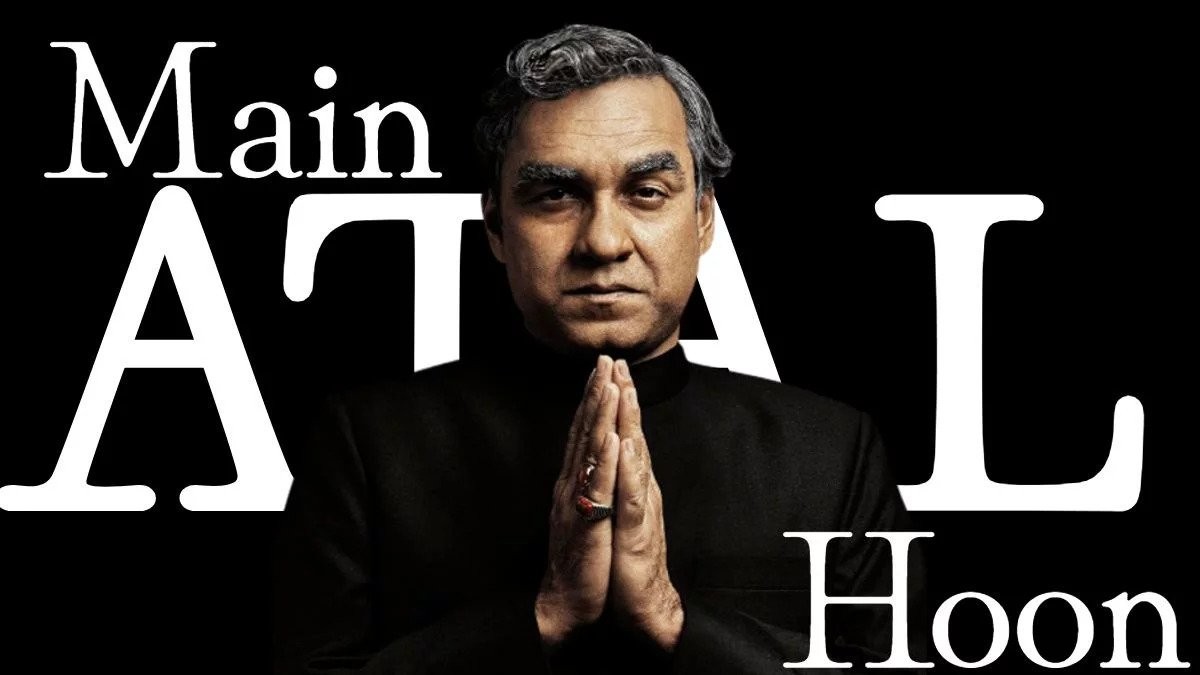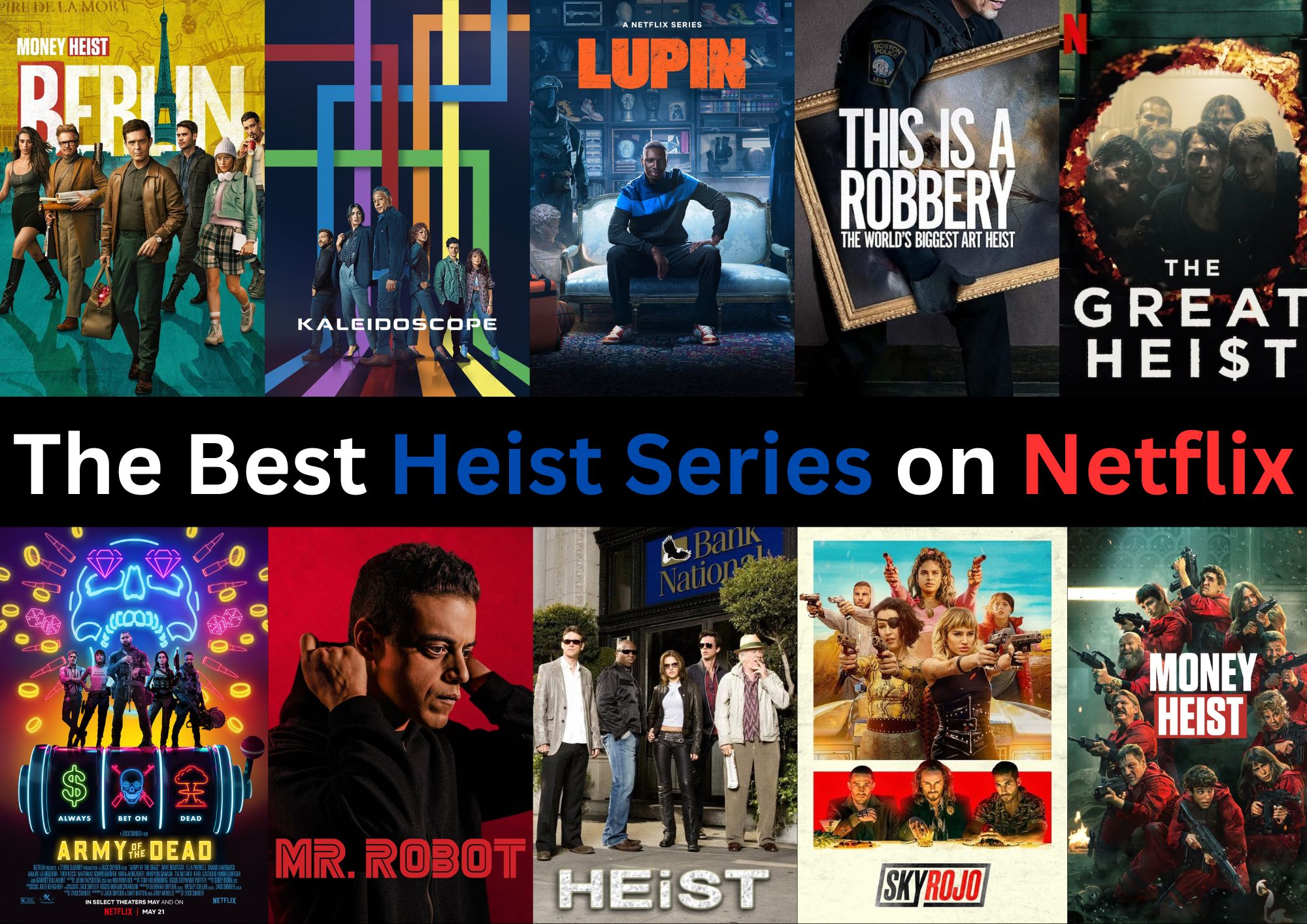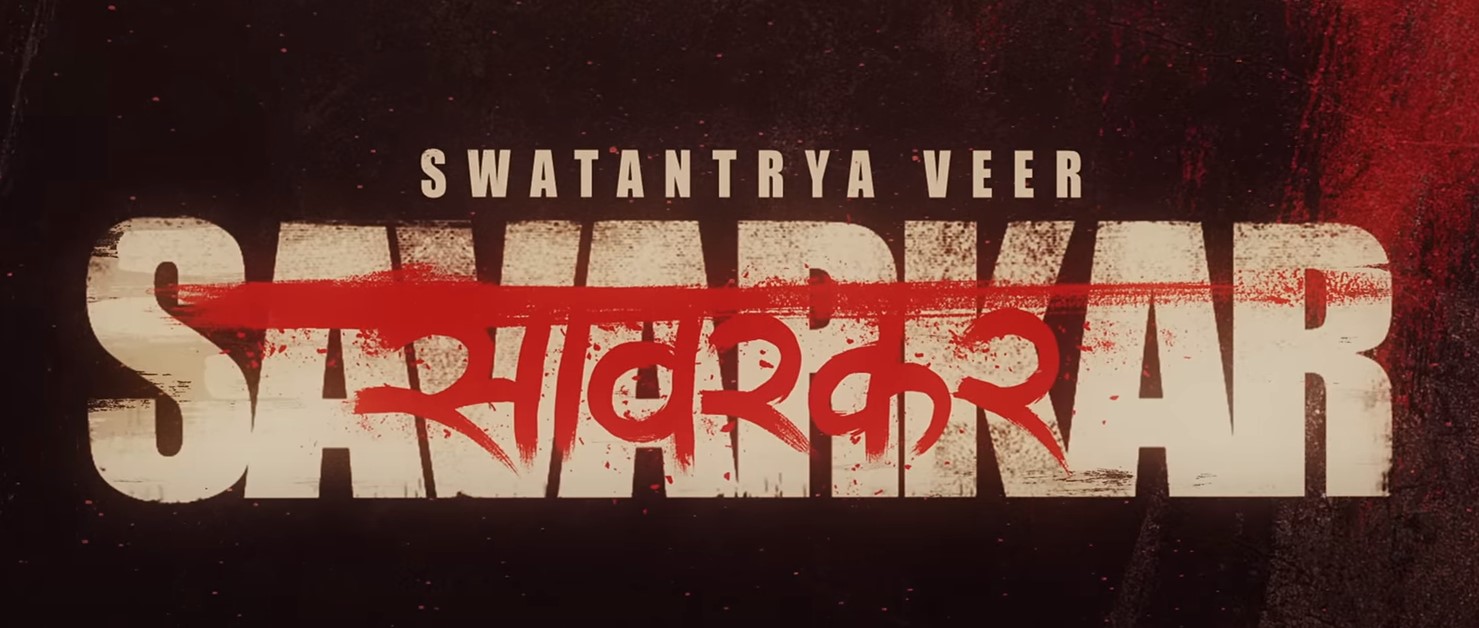The top 20 manga series of all time encompass a wide range of narrative approaches, genres, and styles that have captured the attention of readers all around the world. These shows’ remarkable popularity may be attributed to their complex character development, gripping stories, and sometimes avant-garde artwork. They cover a wide range of topics, from thrilling mysteries and lighthearted comedies to epic adventures and heartbreaking tragedies, and they all have a lasting influence on the manga business and popular culture. Their impact is not limited to written works; it has spawned several anime, video games, merchandising, and film adaptations. These manga have established themselves as timeless masterpieces in the field of graphic storytelling thanks to their combination of critical and economic success, as well as a devoted worldwide fan following.
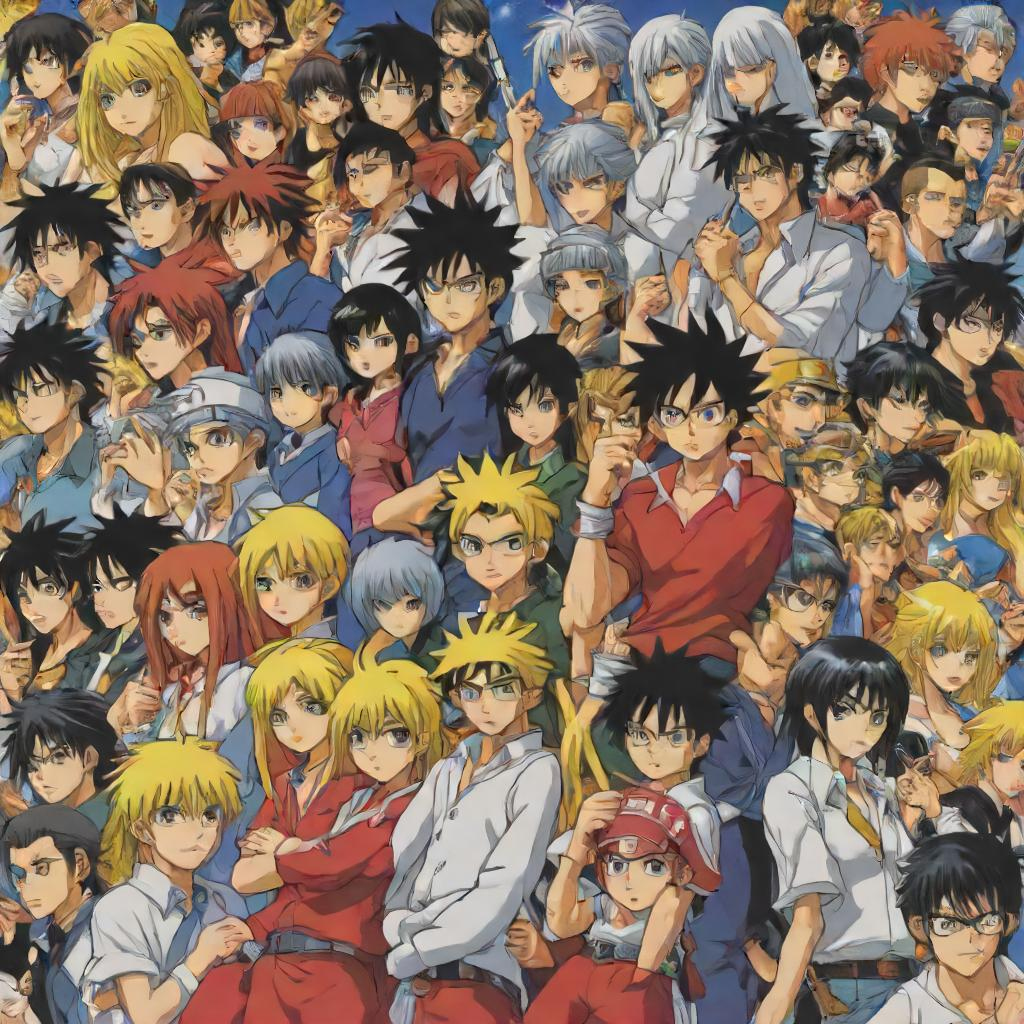
1. Attack on Titan (2013 – 2023)
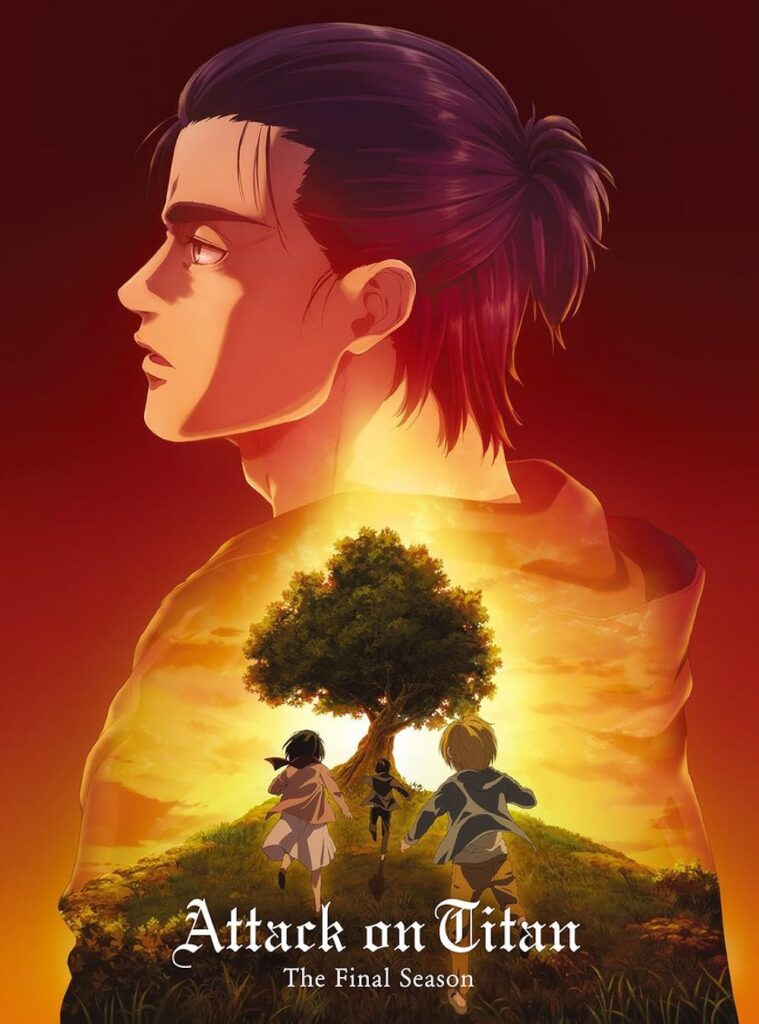
Attack on Titan is a Japanese dark fantasy anime television series that is based on the manga series of the same name by Hajime Isayama (Japanese: 逋撃の巨纺, Hepburn: Shingeki no Kyojin, lit. “The Advancing Giant”). April 7, 2013, marked the start of the series, and November 5, 2023 marked its end. The first two seasons of MBS TV and the third season of NHK General TV both showed it. The series has been available for streaming on Crunchyroll, Funimation, and Hulu in North America. In the US, Adult Swim’s Toonami television network has shown episodes of Attack on Titan.
Attack on Titan is a post-apocalyptic drama that centers on Eren Yeager and his pals Mikasa Ackerman and Armin Arlert as they navigate a world where the remnants of mankind are sheltered behind walls from monstrous humanoids known as Titans. Titans devour Eren’s mother and demolish their hometown after a Colossal Titan penetrates the wall. Eren swears revenge and enlists in the elite Survey Corps, a fighting force against Titans. It follows Eren’s adventure with the Survey Corps as they battle the Titans and learn more about their past and origins.
This series has received 517k votes and 9.1 rating on IMDB.
2. Fullmetal Alchemist: Brotherhood (2009 – 2010)
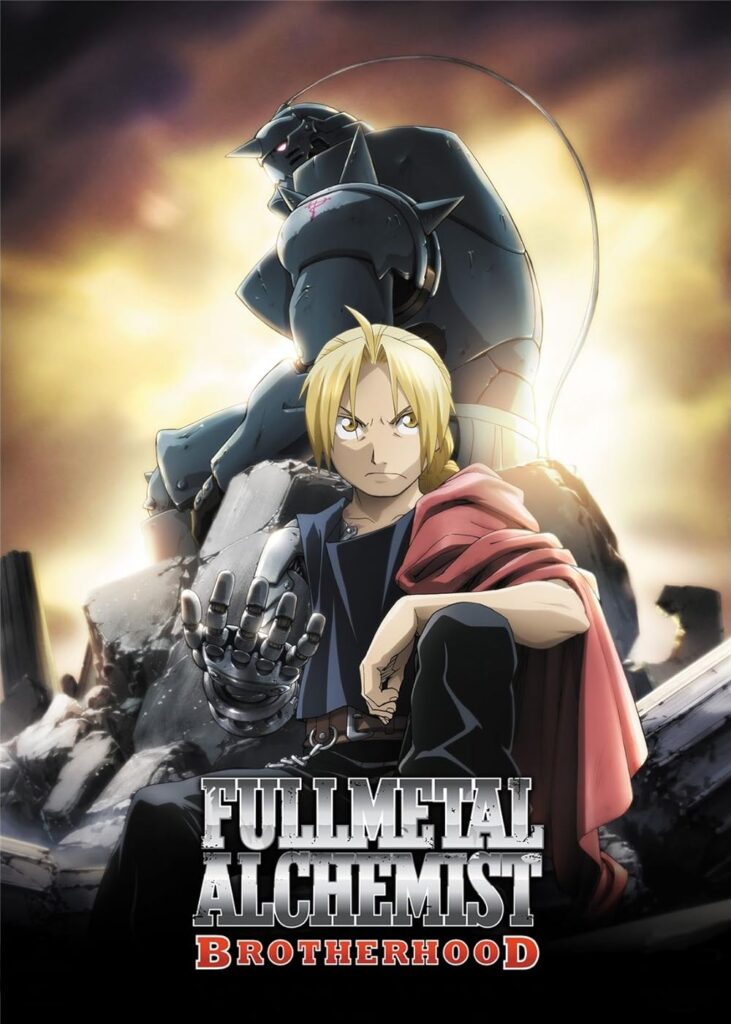
The Japanese anime television series Fullmetal Alchemist: Brotherhood (Japanese: 鋼の挬懑術帑 FULLMETAL ALCHEMIST, Hepburn: Hagane no Renkinjutsushi) is based on Hiromu Arakawa’s original Fullmetal Alchemist manga series. The series is directed by Yasuhiro Irie, written by Hiroshi Ōnogi, and scored by Akira Senju, with production handled by Bones. After 2003’s Fullmetal Alchemist anime series veered away from the manga to make its own tale due to a lack of published manga material to adapt, the series was designed to offer a faithful adaptation that follows the whole plot of the original manga.
2008 saw the start of Fullmetal Alchemist: Brotherhood’s production. From April 2009 to July 2010, sixty-four episodes of the series aired on MBS–TBS. Funimation was the first to license the series in North America, and Adult Swim aired an English-dubbed version of it from February 2010 until September 2011. The rights to the series were lost by Funimation in 2016, and Aniplex of America acquired them.
A critically acclaimed anime series, Fullmetal Alchemist: Brotherhood is regarded as one of the greatest ever. Critics praised the final episodes for their action sequences and moral lessons, as well as for staying true to the manga and adding characters and story points not found in the 2003 anime.
This series has received 199k votes and 9.1 rating on IMDB.
3. One Piece (1999 – Present)
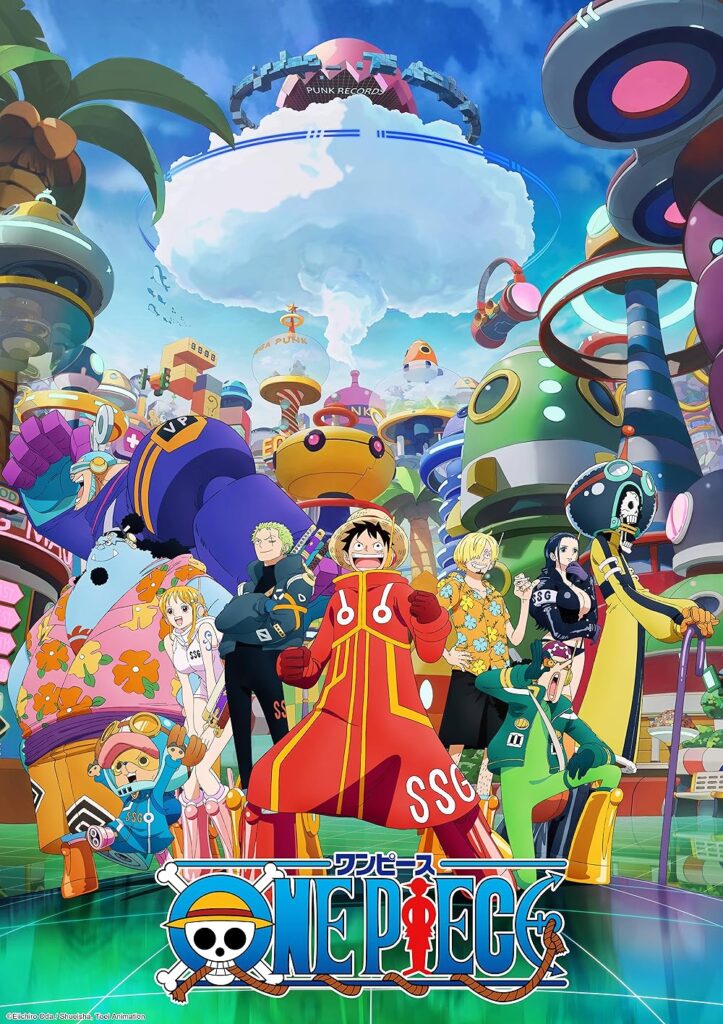
Toei Animation is the producer of the Japanese anime television series One Piece (stylized all caps), which debuted on Fuji TV in October 1999. It is based on the same-titled manga series by Eiichiro Oda. The narrative centers on the exploits of Monkey D. Luffy, a young child who accidentally consumed a Devil Fruit and has rubbery qualities in his body. In an attempt to become the next Pirate King, Luffy travels the Grand Line with his band of pirates, the Straw Hat Pirates, in quest of the “One Piece,” the greatest treasure in the world.
More than 1,100 episodes have been shown since the show’s debut in Japan, and more have been exported to other nations.
This series has received 238k votes and 9.0 rating on IMDB.
4. Death Note (2006 – 2007)
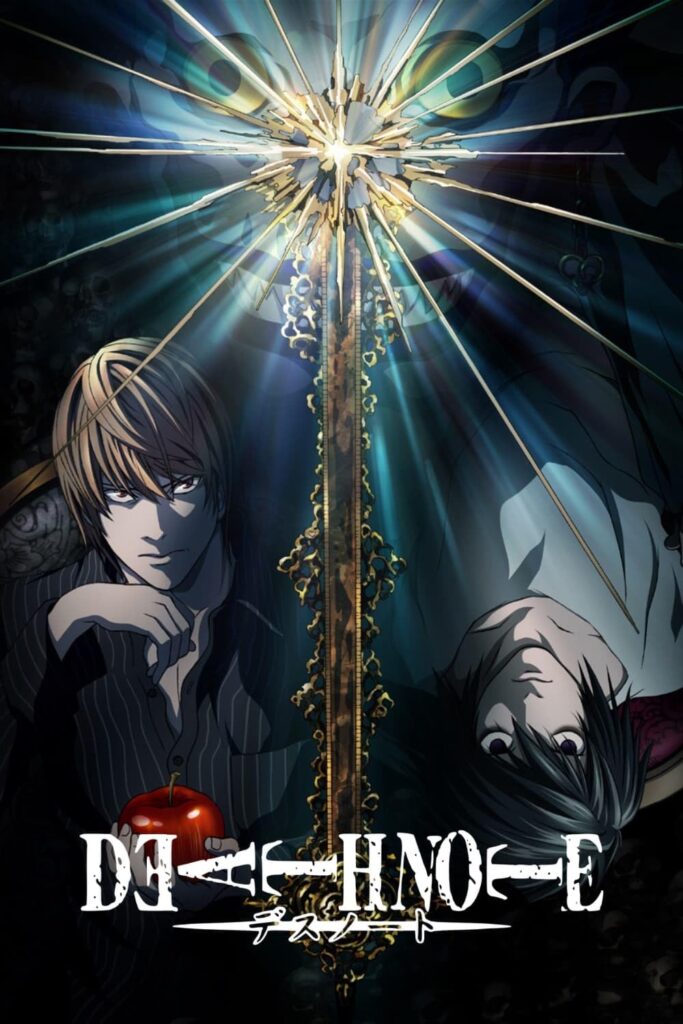
The Japanese manga series Death Note (stylized all capitals) was created by Takeshi Obata and authored by Tsugumi Ohba. Its chapters were compiled into 12 tankōbon volumes and it ran as a serial in Shueisha’s shōnen manga magazine Weekly Shōnen Jump from December 2003 to May 2006. The narrative centers on Light Yagami, a bright high school student who finds a mysterious notebook belonging to the shinigami Ryuk called the “Death Note,” which has the power to supernaturally murder anybody whose name is inscribed in it. The plot of the series revolves around Light’s subsequent attempts to use the Death Note to carry out a global massacre of people he believes to be immoral and to establish a society free from crime, using the alias of a vigilante god named “Kira,” and the subsequent attempts by an elite Japanese police task force to capture him under the mysterious detective L.
Nippon Television aired a 37-episode version of an anime television series, directed by Tetsurō Araki and produced by Madhouse, from October 2006 to June 2007. In 2006, Nisio Isin also published a light book based on the series. Konami has also produced a number of video games for the Nintendo DS. In addition to a television drama in 2015, the series was turned into three live-action films that were released in Japan in June, November 2006, and February 2008. In 2016, a fourth movie and a miniseries called Death Note: New Generation were released. In August 2017, an American film adaption was made exclusively available on Netflix, and a television series is apparently in development.
This series has received 381K votes and 8.9 rating on IMDB.
5. Vinland Saga (2019 – 2023)
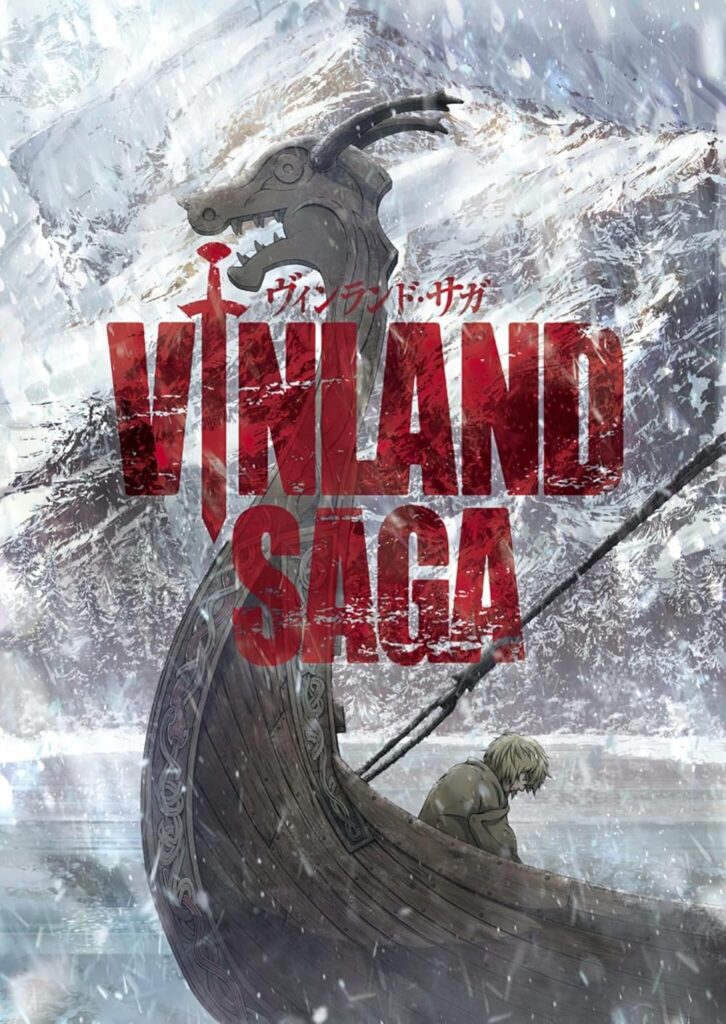
Based on the manga of the same name by Makoto Yukimura, Vinland Saga (Japanese: ヴィンランド・サガ, Hepburn: Vinrando Saga) is a Japanese anime television series. Wit Studio produced the first season in 2019 while MAPPA produced the second one in 2023. They chronicle the lives of a young boy named Thorfinn who, after the death of his father, gets entangled with Vikings. The second season of the show focuses on his existence as a stoic slave who lacks meaning in life, while the first season chronicles his adventures as a vengeful Viking.
Although the two seasons were created by two distinct companies, writer Hiroshi Seko and director Shōhei Yabuta collaborated on both projects. In order to fully explore the characters—such as Thorfinn’s transition into a Viking, his haunting dreams, and Einar’s past prior to being a slave—they sought to add more original content to the adaptation. For a global release, the series was available to stream on Netflix and Amazon Prime.
This series has received 73K votes and 8.8 rating on IMDB.
6. Fighting Spirit (2000 – 2002)
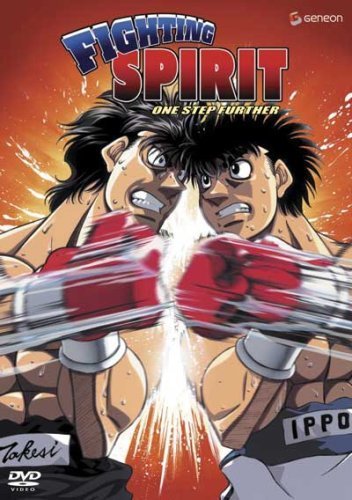
George Morikawa is the author and illustrator of the Japanese manga series Hajime no Ippo (はじめの一歩, lit. “The First Step”). Since October 1989, Kodansha has serialized it in the shōnen manga magazine Weekly Shōnen Magazine. As of February 2024, its episodes have been compiled into 140 tankōbon volumes. It tells the tale of Ippo Makunouchi, a high school student, as he starts boxing and wins many titles while facing off against different opponents.
Madhouse created an anime version that ran for 76 episodes on Nippon TV from October 2000 to March 2002. In 2003, there were two releases: an original video animation (OVA) and a television film. From January to June 2009, Hajime no Ippo: New Challenger, a second series, aired. Hajime no Ippo: Rising, a third series, ran from October 2013 to March 2014. The first series, which included the television movie, was licensed by Geneon in 2003 and distributed under the Fighting Spirit banner in North America. Discotek Media relicensed it in 2020, encompassing both the OVA and the television film.
This series has received 9.9K votes and 8.8 rating on IMDB.
7. Slam Dunk (1993 – 1996)
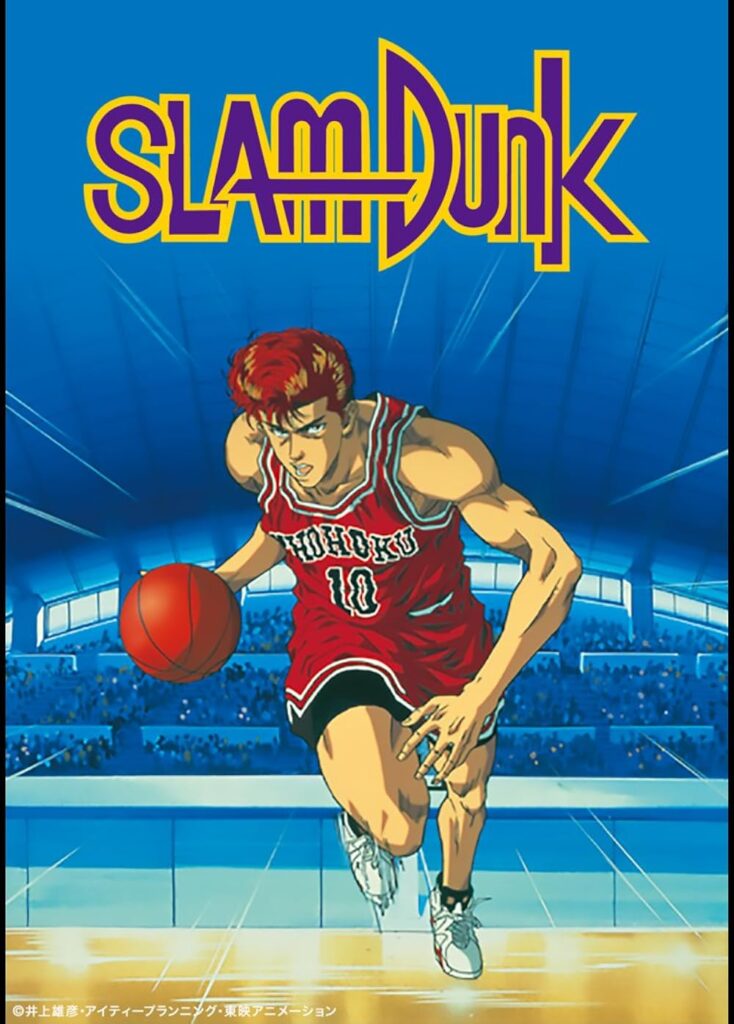
Takehiko Inoue is the author and illustrator of the Japanese sports comic series Slam Dunk, which is capitalized throughout. From October 1990 to June 1996, Shueisha’s shōnen manga magazine Weekly Shōnen Jump published it. The chapters were compiled into 31 tankōbon volumes. The plot centers on the basketball squad of Shōhoku High School, which is situated in the Japanese prefecture of Shōnan.
Toei Animation turned the manga into an anime television series that ran from October 1993 to March 1996. The series has been televised globally and has become more popular, particularly in Europe, Japan, and a number of other Asian nations. The First Slam Dunk, an anime feature film, debuted in Japan in December 2022. With 170 million copies in print, Slam Dunk is the seventh-best-selling manga series ever. It won the 40th Shogakukan Manga Award in the shōnen category in 1994. Slam Dunk is considered as one of the all-time great sports manga series in Japan and is credited with helping to popularize basketball among young people there in the 1990s. The Japan Basketball Association gave Inoue special recognition in 2010 for her contribution to the growth of basketball in Japan.
This series has received 7.4K votes and 8.8 rating on IMDB.
8. One Punch Man (2015 – Present)
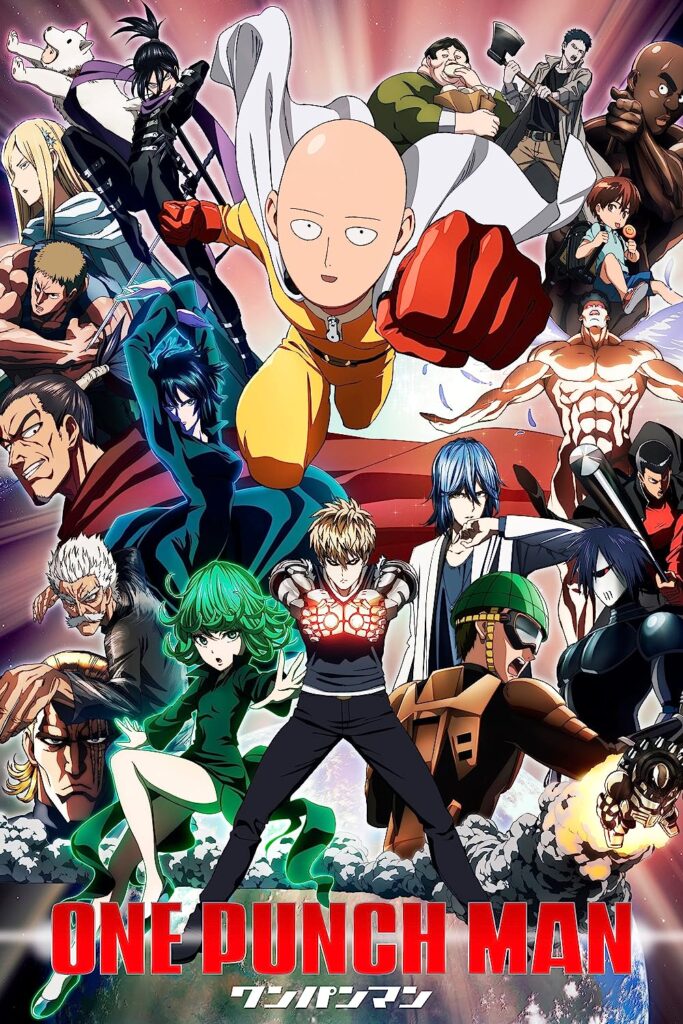
Japanese superhero comic series One-Punch Man (Japanese: ワンパンマン, Hepburn: Wanpanman) was developed by One. It narrates the tale of Saitama, a superhero who becomes bored with a lack of challenge because he can destroy any opponent with a single blow. Early in 2009, one wrote the webcomic manga version.
June 2012 saw the release of a digital manga version with illustrations by Yusuke Murata on Shueisha’s Tonari no Young Jump website. Every now and again, its chapters are collected and released as stand-alone tankōbon volumes. Thirty volumes have been issued as of March 2024. The remake manga was licensed by Viz Media for English language distribution in North America, where it was serialized in Weekly Shonen Jump, a digital magazine.
Madhouse developed an anime adaption that aired in Japan from October to December 2015. 2019 saw the airing of a second season, which J.C. Staff produced, from April to July. J.C. Staff has also confirmed a third season. It had its American debut in July 2016 on Adult Swim’s Toonami programming block, thanks to a license from Viz Media for North America. In October 2019, the second season made its debut on the network.
This series has received 187K votes and 8.7 rating on IMDB.
9. Berserk (1997 – 1998)
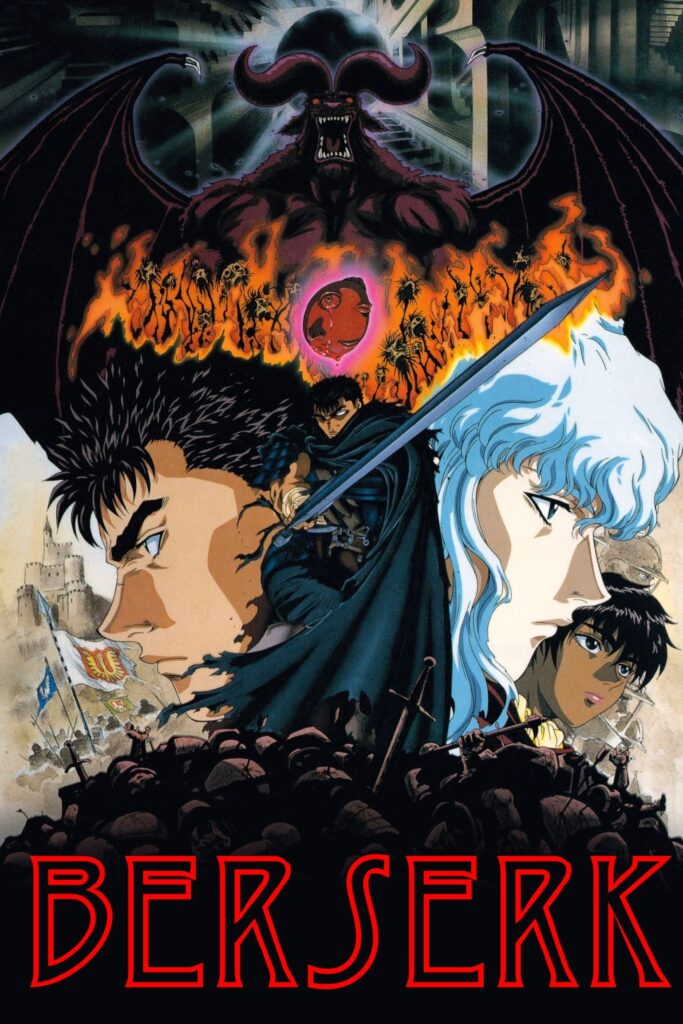
Kentaro Miura is the author and illustrator of the Japanese manga series Berserk (Japanese: ベルセルク, Hepburn: Beruseruku). The tale revolves around the characters of Guts, a lone swordsman, and Griffith, the head of a mercenary band known as the “Band of the Hawk,” and is set in a dark fantasy setting influenced by medieval Europe. The show centers on Guts’ quest for vengeance against Griffith, who abandoned his allies and betrayed him in order to grow into a formidable demonic creature.
OLM turned Berserk into a 25-episode anime television series that aired from October 1997 to March 1998, focusing on the Golden Age plot arc. Three theatrical anime films based on the Golden Age arc were also produced; the first two debuted in 2012 and the third in 2013. Two seasons of a second 24-episode anime television series were shown in 2016 and 2017.
This series has received 54K votes and 8.7 rating on IMDB.
10. Haikyu!! (2014 – 2020)
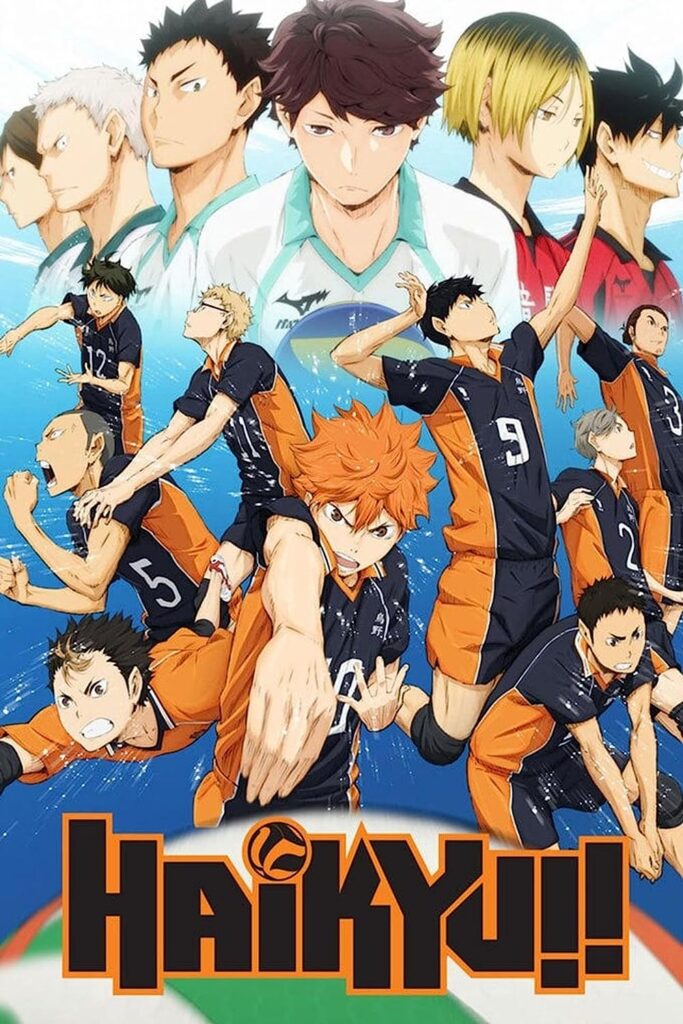
Haruichi Furudate is the author and illustrator of the Japanese manga series Haikyu!! (ハイキュー!!, Haikyū!!, from the kanji 排球 “volleyball”). From February 2012 to July 2020, Shueisha’s shōnen manga magazine Weekly Shōnen Jump published it. The chapters were compiled into 45 tankōbon volumes. The protagonist of the tale is Shoyo Hinata, a young man who, in spite of his little size, is driven to excel as a volleyball player.
Production I.G. developed an anime television series adaption that ran for 25 episodes on MBS from April to September 2014. A second season consisting of twenty-five episodes ran from October 2015 to March 2016. Ten episodes from a third season ran on television from October to December of 2016. A fourth season consisting of 25 episodes was broadcast in two parts between January and December of 2020. The Haikyu!! anime film series As the series’ climax, Final will be released in two parts; the first portion was made available in February 2024. While Sentai Filmworks owns the rights for the anime series’ digital and home distribution, Viz Media has the license for the manga in North America.
This series has received 36K votes and 8.7 rating on IMDB.
11. Gintama (2005 – 2021)
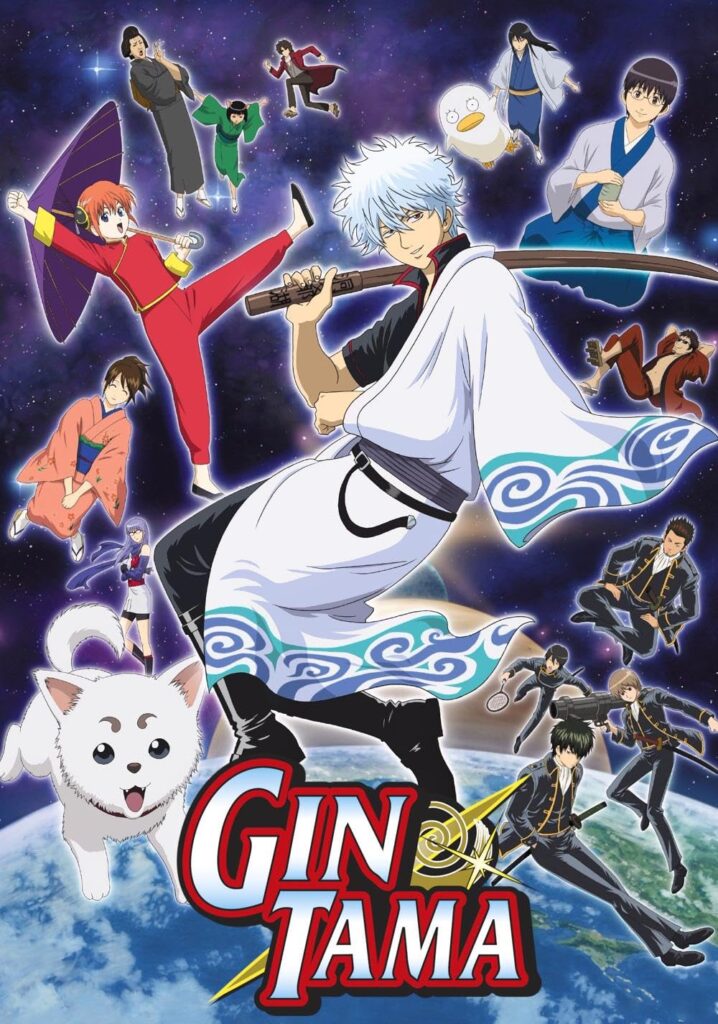
Hideaki Sorachi is the author and illustrator of the Japanese manga series Gintama (銀魂, lit. “Silver Soul”). It ran from December 2003 to September 2018 in Shueisha’s shōnen manga magazine Weekly Shōnen Jump, then from December 2018 to February 2019 in Jump Giga. Finally, it concluded in May and June 2019 on the Gintama app. 77 tankōbon volumes gathered its chapters. The story revolves around samurai Gintoki Sakata, who works as a freelancer in his own business, “Yorozuya,” with his comrades Shinpachi Shimura and Kagura. Edo has been overrun by aliens known as Amanto. Sakata provides a wide range of services to tackle odd jobs and varied duties.
Sunrise created an original video animation (OVA) based on the series, which debuted at Jump Festa 2006 Anime Tour in 2005. A complete 367-episode anime television series that aired on TV Tokyo from April 2006 to October 2018 followed this. There have been three animated movies made. 2010 saw the debut of the first movie in April. July 2013 saw the premiere of the second movie. January 2021 saw the premiere of the third and final movie. In addition to the anime series, Gintama has been the subject of several light novels and video games. Warner Bros. Pictures released a live-action film adaption of the same name in Japan in July 2017.
This series has received 15K votes and 8.7 rating on IMDB.
12. Mob Psycho 100 (2016 – 2022)
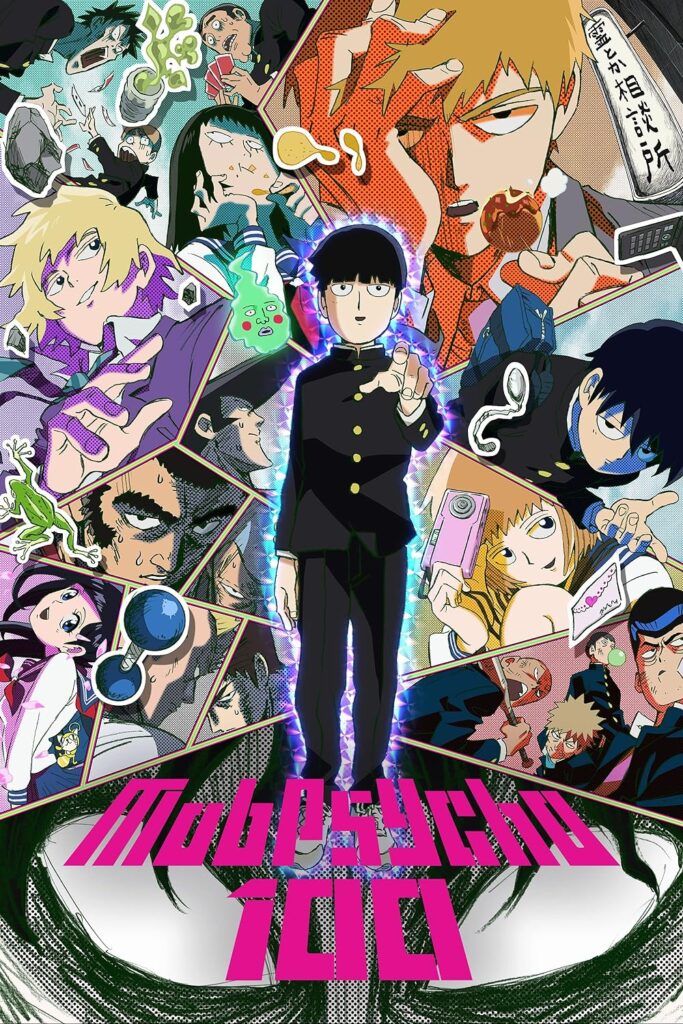
Japanese web comic series Mob Psycho 100 (モブサイコ100, Hepburn: Mobu Saiko Hyaku) is authored and illustrated by One. It ran as a serial on the Ura Sunday website of Shogakukan from April 2012 to December 2017. Since December 2014, it has also been accessible online via the MangaONE mobile app from Shogakukan. Its chapters were collected into 16 tankōbon volumes by Shogakukan. The plot centers on the difficulties of young Shigeo Kageyama, also known by his nickname Mob, a child with powerful psychic abilities, to find the kind of straightforward happiness he seeks.
Bones made an anime television series adaption. July and September of 2016 was the first season that aired. January to April of 2019 was the second season, and October to December of 2022 was the third and final season. 2018 saw the airing of a live-action series adaption from January to April. In 2018, the Shogakukan MangaONE app published a spin-off manga series called Reigen. In 2018, Dark Horse Comics obtained a license to publish the manga in English in North America. In the meanwhile, Bang Zoom! Entertainment developed an English adaptation of the anime series in December 2016 which Crunchyroll licensed for streaming. In October 2018, the series aired on Adult Swim’s Toonami block.
This series has received 46K votes and 8.6 rating on IMDB.
13. Fruits Basket (2019 – 2021)
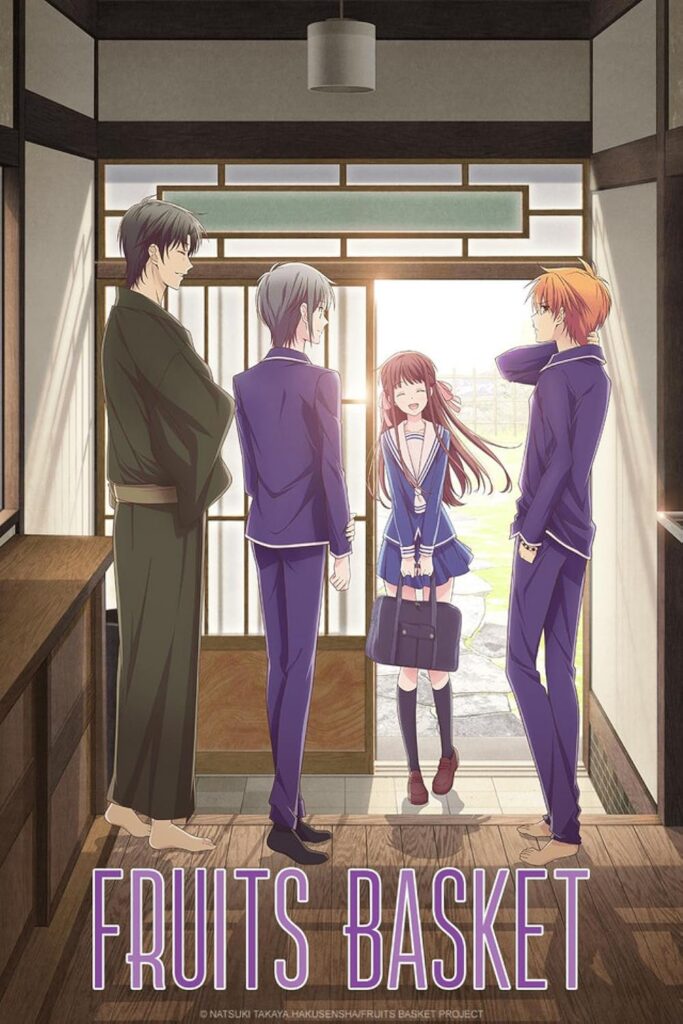
Fruits Basket, an anime series that premiered in 2019, is the second adaptation of Natsuki Takaya’s manga series of the same name. This time, all 23 volumes of the plot are included in the anime. At Takaya’s request, a new cast and crew were added to the November 2018 announcement of the new anime adaptation. TMS Entertainment will oversee the 63 episodes, which will be produced across three seasons from April 2019 to June 2021. Masaru Shindou handled character designs, Taku Kishimoto handled series composition, and Yoshihide Ibata directed the show. Funimation, who published the series under the Crunchyroll-Funimation agreement, is a co-producer of the revival.
Volumes 1 through 5 of the manga and portions of volumes 6 and 7 were adapted for television in the first season. From April 6 to September 21, 2019, it aired on TV Tokyo, TV Osaka, and TV Aichi for 25 episodes. Beverly’s “Again” serves as the initial opening theme for episodes 1 through 13. “Chime” by Ai Otsuka serves as the second opening theme for episodes 14 through 25. “Lucky Ending” by Vickeblanka serves as the first episode closing theme for episodes 1–13. “One Step Closer” by INTERSECTION serves as the second closing theme for episodes 14 through 25.
The remainder of volumes 6 and 7, as well as all of the material from volume 8 to the start of volume 17, were adapted for the second season. From April 7 to September 22, 2020, it was shown. “Prism” by AmPm ft Miyuna serves as the third opening theme for episodes 26 through 38. Toki Asako’s “Home” serves as the fourth opening theme for episodes 39 and beyond. THE CHARM PARK’s “ad meliora” serves as the third closing theme for episodes 26 through 38. “Eden” by Monkey Majik serves as the fourth ending theme for episodes 39 and beyond. The entirety of volume 17 to the series’ conclusion was adapted for the third and final season. was was called Fruits Basket: The Final and was broadcast from April 6 to June 29, 2021.
This series has received 9.2K votes and 8.6 rating on IMDB.
14. Hunter x Hunter (1999 – 2001)
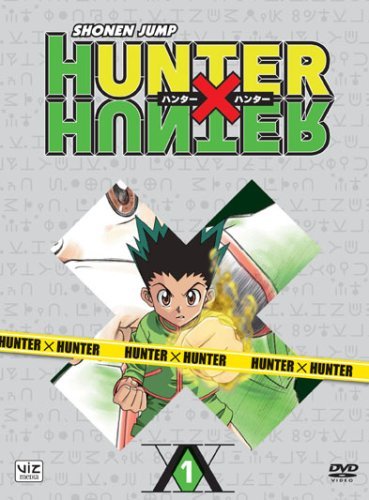
Yoshihiro Togashi is the author and illustrator of the Japanese manga series Hunter x Hunter, which is pronounced “hunter hunter”. Since March 1998, Shueisha’s shōnen manga magazine Weekly Shōnen Jump has serialized it; however, since 2006, the manga has taken several long pauses. As of November 2022, its chapters have been compiled into 37 tankōbon volumes. The narrative centers on a young child named Gon Freecss who learns that his father, who abandoned him when he was a small child, is actually a well-known Hunter—a certified expert in fanciful activities like tracking down uncommon or unknown animal species, treasure hunting, exploring uncharted areas, or tracking down criminals. Gon sets off on a quest to become a Hunter and locate his father in the end.
The anime television series Hunter × Hunter, helmed by Kazuhiro Furuhashi and consisting of 62 episodes, was adapted by Nippon Animation and aired on Fuji Television between October 1999 and March 2001. Nippon Animation went on to develop three distinct original video animations (OVAs) with a combined runtime of thirty episodes, which were distributed throughout Japan between 2002 and 2004. Two animated feature films were produced in 2013 in addition to a second Madhouse anime television series that ran for 148 episodes on Nippon Television from October 2011 to September 2014. Numerous video games, audio albums, musicals, and other media based on Hunter x Hunter are also available.
This series has received 9.7K votes and 8.6 rating on IMDB.
15. Neon Genesis Evangelion (1995 – 1996)
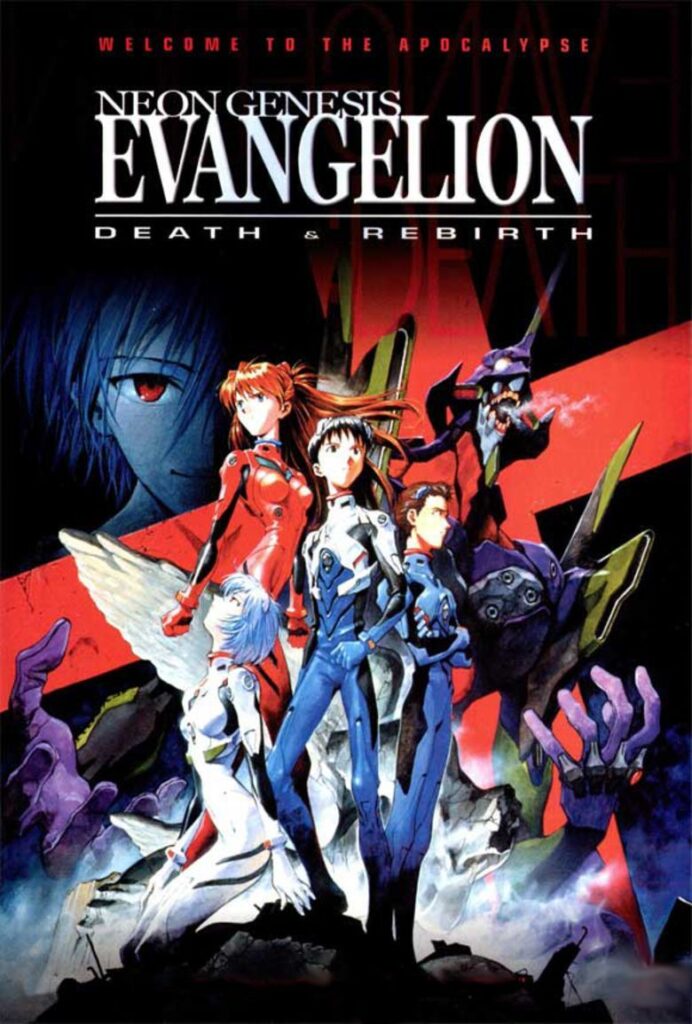
Neon Genesis Evangelion, also known as Evangelion or Eva, is a Japanese mecha anime television series produced by Gainax, directed by Hideaki Anno, and animated by Tatsunoko. The Japanese title of the show is 閰縖紀エヴァンゲリオン, while the Hepburn title is Shinseiki Evangerion, meaning “New Century Evangelion” in Japanese and “New Beginning Gospel” in Greek. TV Tokyo aired it from October 1995 to March 1996. The events of Evangelion take place fifteen years after the Second Impact, a global apocalypse that mostly affects Tokyo-3, a futuristic walled city. The main character is Shinji Ikari, a young boy who was enlisted by his father Gendo in the shadowy Nerv organization to operate an enormous biomechanical robot known as an Evangelion in combat against entities referred to as Angels.
The show delves into the feelings and experiences of Nerv’s members and the Evangelion pilots as they struggle to stop Angels from starting any more apocalyptic disasters. They are required to comprehend the underlying causes of events and the motivations guiding human behavior during this process. The series, which has been called a deconstruction of the mecha genre, incorporates archetypal imagery drawn from Jewish and Christian mystical traditions, including as Kabbalah and Midrashic narratives, as well as Shinto mythology. Freud and Jung’s psychoanalytic theories of human behavior are also heavily represented.
This series has received 86K votes and 8.5 rating on IMDB.
16. Dragon Ball (1986 – 1989)
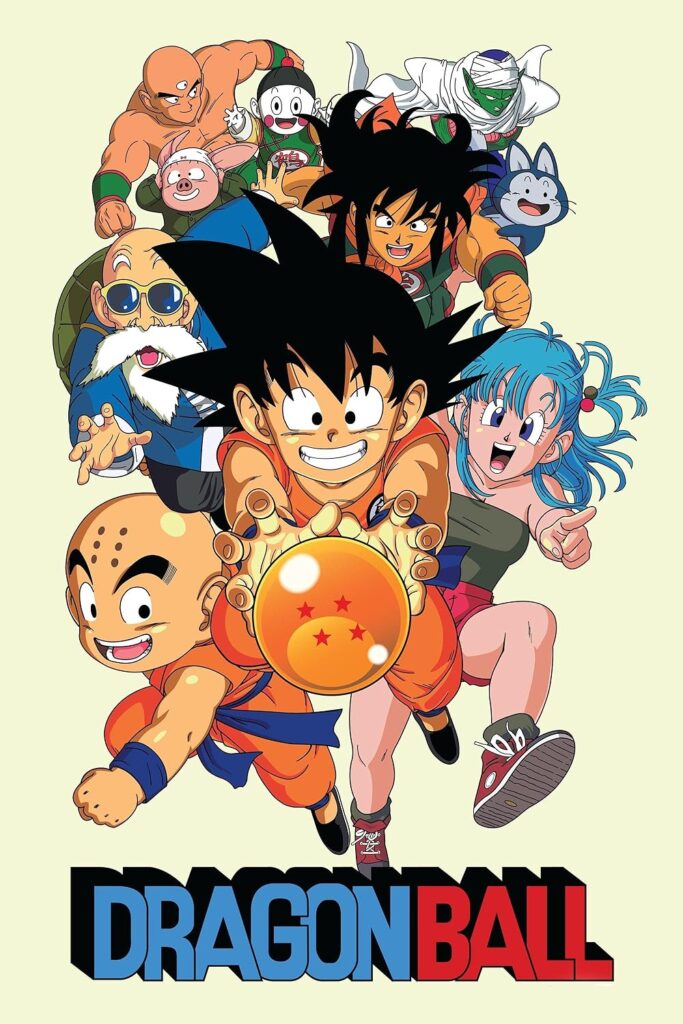
Akira Toriyama founded the Japanese media series Dragon Ball (ドラゴンボール, Hepburn: Doragon Bōru) in 1984. Written and drawn by Toriyama, the first manga was published in Weekly Shōnen Jump from 1984 to 1995. Shueisha, the manga’s publisher, compiled the 519 individual chapters of the manga into 42 tankōbon volumes. The famous Chinese novel Journey to the West, written in the 16th century, served as the inspiration for Dragon Ball at first, along with elements from Hong Kong martial arts movies. Characters from Dragon Ball also practice a range of East Asian martial arts, such as Wing Chun (kung fu) and karate. The show chronicles the exploits of the lead character, Son Goku, as he trains in martial arts from childhood to maturity.
His early years are spent away from society until he meets Bulma, an adolescent girl, who invites him to accompany her on her journey to find the seven orbs known as the Dragon Balls, which, when gathered, may call out a dragon that grants wishes. Along the way, Goku meets a number of new friends, matures into a family man, learns about his extraterrestrial ancestry, and faces off against a diverse range of enemies, many of whom are also after the Dragon Balls.
This series has received 66K votes and 8.5 rating on IMDB.
17. Detective Conan (1996 – Present)
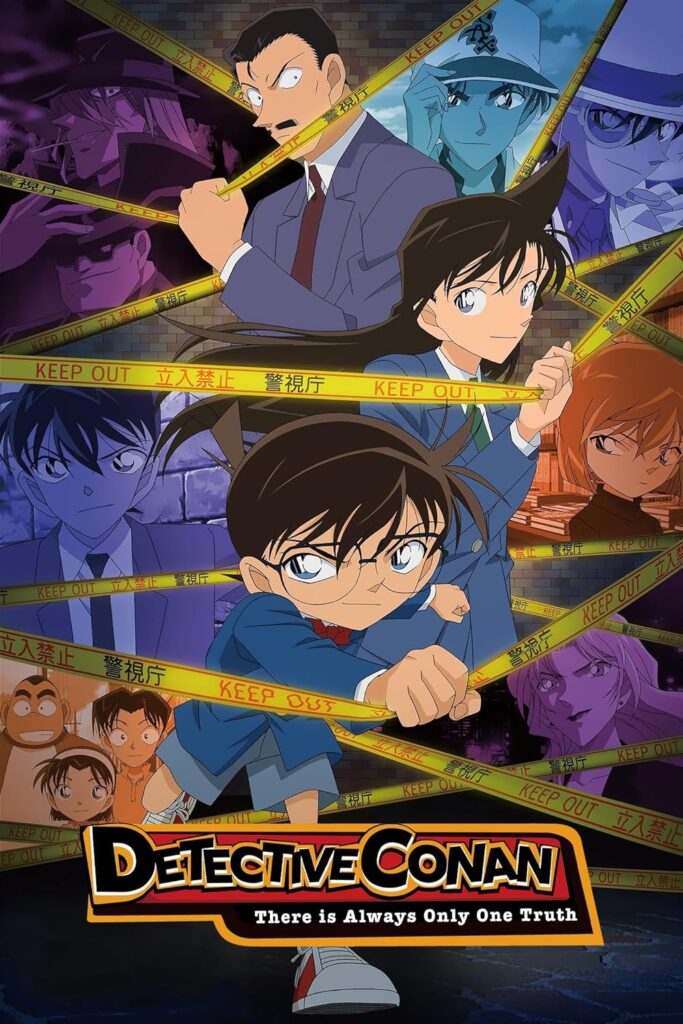
Gosho Aoyama is the author and illustrator of the Japanese detective manga series Case Closed, which is also known as Detective Conan (Japanese: 名探偵コナン, Hepburn: Meitantei Konan, lit. “Great Detective Conan”). Since January 1994, it has been serialized in Weekly Shōnen Sunday, a shōnen manga magazine published by Shogakukan. As of April 2024, its episodes have been compiled into 105 tankōbon volumes. The English-language editions of Detective Conan from Funimation and Viz Media were retitled Case Closed due to rights issues around the term Detective Conan. The plot centers on Shinichi Kudo, a high school investigator who, while looking into a mystery organization, has his body changed into that of an elementary school student. He typically assumes the personas of different individuals, including the father of his childhood best friend, to solve a multiplicity of crimes.
Yomiuri Telecasting Corporation and TMS Entertainment turned the manga into an anime television series, which debuted in January 1996. Animated feature films, original video animations, video games, audio disc releases, and live-action episodes are all products of the anime. In2003, Funimation obtained a license to show the anime series in North America under the name Case Closed, giving the characters Americanized names. After its Adult Swim debut, the anime was canceled because of its poor viewership.
This series has received 15K votes and 8.5 rating on IMDB.
18. Great Teacher Onizuka (1999 – 2000)

Tooru Fujisawa is the author and illustrator of the Japanese manga series Great Teacher Onizuka, also known by its official abbreviation GTO. Its chapters were compiled into 25 tankōbon volumes and it was first serialized in Kodansha’s shōnen manga magazine Weekly Shōnen Magazine from January 1997 to February 2002. The protagonist of the tale is 22-year-old Eikichi Onizuka, a former member of bōsōzoku, who works as a teacher at Holy Forest Academy, a private middle school in Tokyo, Japan. It is an extension of Fujisawa’s previous manga series, Bad Company and Shonan Junai Gumi, which center on Onizuka’s life prior to his career as a teacher.
The popularity of the manga led to the creation of several GTO adaptations. These included a live-action film directed by Masayuki Suzuki that was released in December 1999, a 12-episode Japanese television drama that ran from July to September 1998, and a 43-episode anime television series produced by Pierrot that aired in Japan on Fuji TV from June 1999 to September 2000. In Japan, two additional live-action series debuted in 2012 and two more in 2014.
The manga is among the best-selling manga series in history, with over 50 million copies in print. Great Teacher Onizuka was the shōnen category winner of the 22nd Kodansha Manga Award in 1998.
This series has received 11K votes and 8.5 rating on IMDB.
19. Rurouni Kenshin (1996 – 1998)
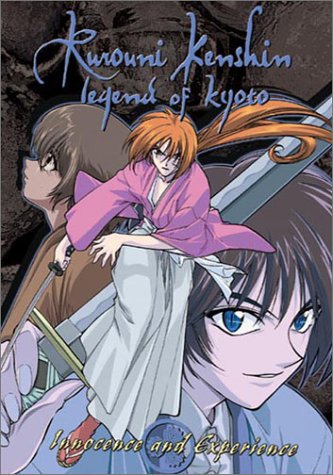
Nobuhiro Watsuki is the author and illustrator of the Japanese manga series Rurouni Kenshin: Meiji Swordsman Romantic Story (Japanese: るろうに剣心 -明治剣客浪漫^-, Hepburn: Rurōni Kenshin -Meiji Kenkaku Roman Tan-). The plot follows Hitokiri Battosai, a former Bakumatsu assassin, and starts in 1878, the eleventh year of the Meiji period in Japan. Following his efforts against the bakufu, he transforms into Himura Kenshin, a nomadic swordsman who defends the Japanese populace under the solemn promise to never take another life. With Kenshin being a former assassin and the plot developing into a more somber tone, Watsuki authored the series in an effort to create a shōnen manga that stood apart from others that were being released at the time.
Viz Media has released the manga in its entirety in North America, along with the first light novel and guidebook. In certain English translations, Rurouni Kenshin is subtitled “Wandering Samurai”. As of 2019, there were about 72 million copies of the Rurouni Kenshin manga in circulation, making it one of the best-selling manga series ever. Numerous magazines have given the series positive reviews for manga, anime, and other media; both have expressed satisfaction with the historical setting and character designs. Rurouni Kenshin: The Hokkaido Arc is a straight sequel that Watsuki started in Jump Square in 2017.
This series has received 21K votes and 8.5 rating on IMDB.
20. Mushi-Shi (2005 – 2014)
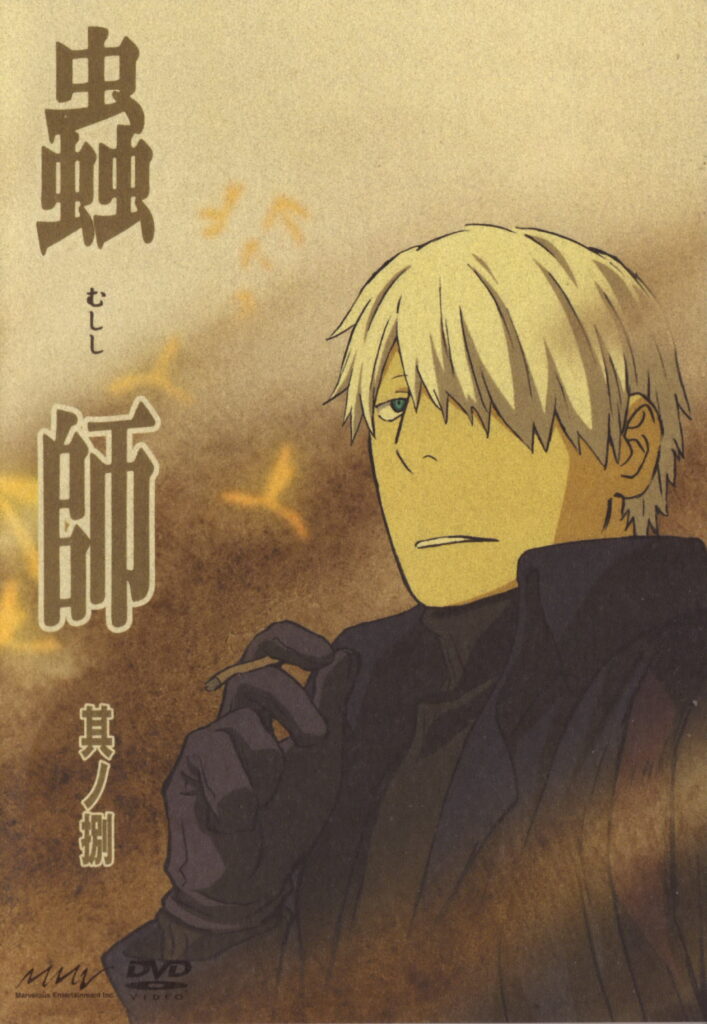
The Mushi-Shi anime series’ episode list is provided below. October 23, 2005 was the show’s debut in Japan. However, after 20 episodes, it was canceled. The remaining six episodes were aired again on May 15, 2006. Jan 4, 2014 saw the airing of a special episode. On April 5, 2014, a second series, Mushi-Shi -Next Passage-, began broadcasting. June 21, 2014 marked the conclusion of the second series’ first half. The remaining episodes of the show aired in the fall, with a special called “Path of Thorns” airing first. This episode covers the last two chapters of volume 7 of the manga. On May 16, 2015, a second special episode based on the manga’s final arc, “Bell Droplets,” was aired in theaters.
In the anthology series Mushi-Shi, every episode delivers a stand-alone tale without reference to other installments. Because of this, the anime’s creators were able to rearrange the storylines’ relative sequence. This is the only significant distinction between the manga and the anime, aside from a minor abridgement of the language.
Ally Kerr’s “The Sore Feet Song” serves as the opening theme for the first season, and Toshio Masuda wrote a unique ending for each episode. Lucy Rose’s “Shiver” serves as the second series’ theme tune.
This series has received 15K votes and 8.5 rating on IMDB.

